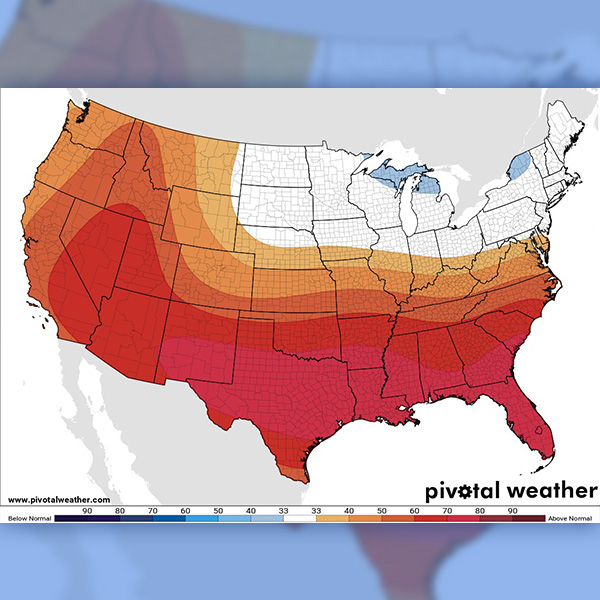ERCOT appears to have set another peak demand record on Monday, but if the grid operator’s projections hold out, the mark will be short-lived.
Demand averaged 81.56 GW on Monday during the interval ending at 5 p.m., according to preliminary data. That would break ERCOT’s current unofficial high for demand, when it averaged 81.41 GW July 13.
The grid operator’s six-day forecast indicates it will exceed 86 GW Tuesday, with average demand exceeding 83 GW through Friday. A high-pressure ridge and expanding heat dome have returned to the region and the southern U.S., diverting the jet stream away. Temperatures were forecast to be 5 to 15 degrees Fahrenheit above normal in much of Texas as excessive-heat advisories affect more than 100 million people from Washington state to Florida.
ERCOT says it expects to have sufficient generation to meet forecasted demand. It hasn’t called for voluntary conservation since June 20 and had more than 6.6 GW of operating reserves Monday afternoon. It did issue its third weather watch of the summer for Sunday through Tuesday due to the forecasted temperatures, electrical demand and potential for lower reserves.
The grid operator has averaged more than 80 GW demand for 18 intervals this summer. It reached the mark just once last year, setting a record that has been eclipsed 14 times already.
The clear skies again have led to near-record solar and renewable generation. Sun-powered resources averaged more than 12 GW for much of the afternoon; together with wind resources, they provided more than a third of ERCOT’s fuel mix for much of the day.
The U.S. Energy Information Administration says ERCOT’s solar and wind capacity will double by 2035, but it noted that without upgrades to the transmission system, its analysis finds wind and solar generation increasingly will be curtailed.
ERCOT had almost 10 GW of thermal outages on July 12. Staff use 8.3 GW as a high number in their modeling scenarios.



